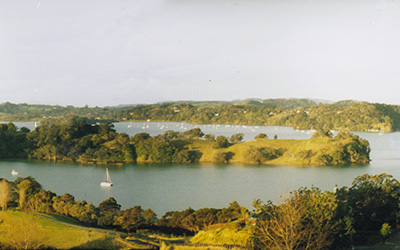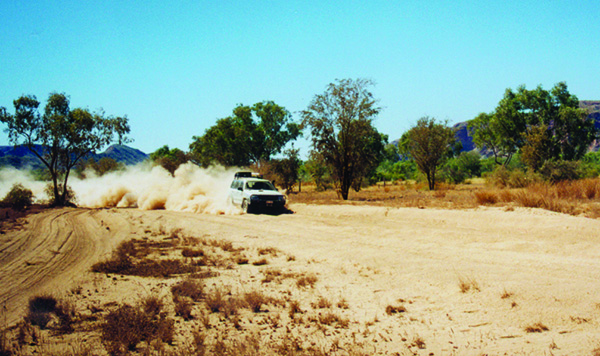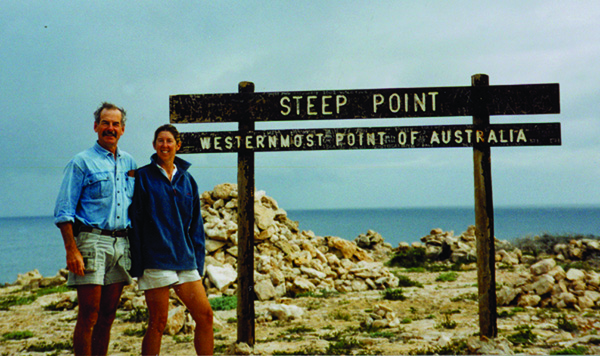mg parts manufacturer as Mahurangi West farmer


Resolution-Breaking View: The view that instantly dissolved Mike and Norma Neil’s resolve to not own another farm. It has been farmed, at great expense, with the harbour’s health ahead of profit, ever since. photographer Lyn Bergquist
Liverpudlian Mike Neil did not become a New Zealander by accident. Nor did he come to live in the Mahurangi by chance.
Becoming a Mahurangi West farmer, however, was accidental—owning another farm was something he and his partner, Norma Neil, had planned not to do.
Immigrating to New Zealand had been on Mike Neil’s agenda all his adult life. But the business he founded at age twenty was too successful and too demanding. mg International commenced as a sports-car wrecking operation. Wrecking as in recycling. Mike says he was never bitten by the bug himself—sports cars were definitely a way to make, rather than to spend, money. His company specialised in mgs, 1960 onwards, and when Austin–Rover quit production, his company was in the box seat supplying both parts and restored vehicles to mg enthusiasts the world over. The United States was a particularly strong market, so much so that an agency was established in Boston. And whereas originally the parts they supplied were pre-loved, the company now produced many parts new, employing their own toolmakers amongst a staff of 110.
But Mike had always been an outdoorsman. While he wasn’t working from 7 am to 7 pm at his plant, he was working on his farm in Wales. Meanwhile, New Zealand continued to beckon. Both the country’s clean, green image and the friendliness of New Zealanders he met played a part in this. The final straw was Chernobyl. Mike’s farm in Wales, in spite of being 1200 miles upwind, was radiated when the Russian nuclear plant failed catastrophically. And while the Neil’s farm production was only stopped briefly, some Welsh farms were kept out of production for two years. And there was a nuclear plant much closer to home: a mere 50 miles upwindas published January 2005: downwind of the farm.

Exchanging the Mud for the Dust: Four-wheel-drive expeditions through the harsh Australian desert provide Mike and Norma Neil with an extreme contrast to their lush Mahurangi farm. image Supplied
One evening as Mike finished his working day, two hours after the last staff member had left—as he says, “having spent that two hours fixing a problem created by my staff”—he decided it was time to act, and he and Norma flew to New Zealand for their first reconnaissance. They hired a camper van and systematically explored both main islands. Not only was the beauty of the landscape everything they had hoped for, New Zealanders they met, wherever there went, invariably embraced their desire to immigrate and vigorously extolled the advantages of their particular neck of the woods.
New Zealanders are lovely people, except when they are behind the wheel of a car! They will do anything for you and then try to kill you for a couple of metres of road, that they don’t even own!
By their second visit to New Zealand, Mike and Norma had narrowed the search to a radius of an hour’s drive from Auckland—one of the considerations was proximity to universities, not that their two daughters were exactly approaching that age but, as Mike says, “one could hope”. The country town of Warkworth beguiled them. Not only was it built on the picturesque Mahurangi River, it was one of the few towns not completely bisected by the main highway. Then arriving to live, they rented a house in Algies Bay and began their search in earnest. They didn’t want to renovate, they had done that. They didn’t want a farm, they had done that. But they did want ‘country’ and a few acres. At a local real estate office, Mike saw a photograph of the view of the Mahurangi Harbour from a listing: ‘What about that?’ The agent explained that it didn’t fit the criteria: the property was a 125-acre farm. Undeterred, the Neils were taken to the property, where a quick rethink of criteria occurred. This was their heaven on earth.
The first job was to renovate the large but ordinary house built in the 1960s for long-time owner, Earnest Eady. When Earnest sold the farm, he bought Opaheke Point—another stunningly situated property. Mike found renovating a New Zealand house a very much easier task than the painstaking restoration of their 18th century Welsh stone farmhouse. Wooden walls readily yielded to the attentions of a chainsaw to throw in big, new windows. Re-blocking was necessitated by the 100-millimetre vertical movement of the typically plastic Northland clay soils.
Then began the task of designing a home to do justice to the property. Unlike the prevailing Kiwi practice of building on the highest point on their property, Norma and Mike chose to build just off the ridgeline and not at its highest point, where the Eady house, in fact, stands, and to allow their spacious home to ‘grow’ naturally down the slope. As a consequence, the visual impact from the harbour is minimal, in spite its generous footprint. Timber finishes, and much planting, the organic form of the house now looks very natural and comfortable in its park-like setting. A massive pöhutukawa nicely anchors what could almost be thought of as a small coastal village. The endlessly spreading boughs of this picturesque tree used to provide a very popular plaza for Perendale sheep. In those days the property belonged to an absentee, A J Chandris—many New Zealanders left on their overseas experience on Chandris Line ships.

Farthest from Mahurangi: At 5861 kilometres from Mahurangi West, Steep Point is the farthest west Mike and Norma Neil can drive, in Australia. Perhaps, another time, that crucial distance could be added to the sign. image Supplied
Mike and Norma were fully engaged in the design and execution of what is a large, complex and attractive house. After the main construction was clad, with a minimum of internal partitions, Mike and one other worker set about designing and finishing the interior. Because, in spite of having gone to the extent of commissioning a three-dimensional computer simulation, when such technology was very new and expensive, much of the interior detail, final placement of windows etcetera, was determined as work proceeded. The whole brought huge satisfaction for the owners—and the absolute resolve to never do it again.
As mentioned, Mike had had no intention of returning to farming. But this property offered to provide huge satisfaction and, as Mike puts it:
I have always had dreams, but I never thought I’d be able to afford a property as beautiful as this.
Part of the vast original Huawai Block held by Charles Morgan, the 500-acre Eadysubsequently known as Chandris, then Baird property occupied the entire peninsula between Huawai Bay and the Pukapuka EstuaryDr Ronald Locker in Jade River: A History of the Mahurangi states: Huawai is the proper name for the Pukapuka. In 1990 it was subdivided into two farms and five bush lots. Fortunately for posterity, the Rodney District Council insisted on the creation of an esplanade reserve around the property’s foreshore. Mahurangi Action, at the time, unsuccessfully argued for the addition of a walkway to link the esplanade reserve to Mahurangi West Road, claiming that the next point of public access was the McElroy Reserve 26 shoreline-kilometres to the north. In fact, a legal access point does exist, to the Pukapuka Road, early in that 26-kilometre stretch but is to a non-navigable point and amongst mangroves.
Mike is critical of the stewardship of the local council since the subdivision. Some of the bush lots simply continued to be grazed; there was no policing of the covenants attached to the land. Subsequent owners, in some cases, were unaware of the conditions the subdivider had entered into. Mike also despairs of the challenge to resist further subdivision. He says New Zealanders have an expectation that properties will be subdivided and further subdivided. It is invariably the first question visitors ask him. And while he says he can’t tie his daughters’ hands after they inherit the property, he is determined that it not be subdivided in his lifetime. But meantime he is, in effect, rated on the property’s subdivision potential. Surrounding properties reflect the high value placed on the land for lifestyle, essentially residential, purposes.
The first challenge was to fence the bush. For while stock control was a real consideration:
It is surprising how close you can stand to a fully-grown steer in the bush without seeing it!
But the main motivation was the health of the bush:
It was a mess; there was simply no re-growth.
Fencing initially consisted of stringing two electrified wires around the perimeter of the bush, often simply attached to the trunks of the trees. It took four years to fence off all the bush and the foreshore. Upgrading the initial two-strand fencing has been an ongoing project since. No significant slips have occurred since fencing was completed.
Next, wetland was targeted for fencing. But, in parallel with fencing off streams, a stock watering system had to be undertaken. Where, in many areas, the stock simply waded into the nearest stream or bog, water now needed to be reticulated around the entire property. And while stock ‘do better’ on clean water supplied to properly maintained troughs, the cost and work involved was considerable.
And then there was the building of ‘Lake Neil’. Where the largest bog was located, Mike decided to transform the area into protected wetland and a dam. Ducks were quick to show their appreciation but natives, particularly kōtareNew Zealand kingfisher and pūkeko soon followed. But the dam didn’t just collect wildlife. It collected silt, tonnes of it. After just three years, something in the order of 100 m³ of sediment was dug out. And this generated from land that was completely fenced. Mike also discovered, in the process of tracing an initial leak—”the dam wouldn’t fill!”—to an early field drain. The depth of the field drain indicated that sediment had accumulated to a depth of over five metres at that point of the valley, all since the bush had been cleared less than 150 years earlier.
This experience awoke Mike to what was happening to the harbour generally. He began urging Mahurangi Actionestablished 1974 as Friends of the Mahurangi to gear up for life beyond the frustrating Jamieson Bay public foreshore access issue, ‘which Mike says:
…had to be done but I feel it has turned some people off. Now [Mahurangi Action] has the opportunity to focus back on the environment.
Mike is determined that the membership can be built from its current level of two hundred to five hundred or a thousand:
While that would help the finances, the important thing is to have sufficient clout to be taken seriously. It would also help to have more bodies for the regatta and for riparian planting.
Mike sees the Auckland Regional Council-initiated five-year plan period as the perfect opportunity to build up the membership:
…and that way we will be in a position to keep up the momentum on sedimentation reduction.
One of Mike Neil’s new passions is sailing. Having been taken boating and seeing the wealth of islands and coastline not otherwise accessible to the public, Mike now figured he knew why New Zealanders are a nation of boat owners. While he and Norma have sailed their 37-foot catamaran, Topcat, extensively between the Marlborough Sounds and the Bay of Islands, Mike considers the Mahurangi an important destination, including Warkworth:
Warkworth is the key to focusing attention on the Mahurangi River!
Mike sees huge potential for making the town of Warkworth a must-experience destination for the boating mad inhabitants of the city of sails. The first stage, he suggests, is simply to install proper channel markers in the river; that Lion Red beer cans on bamboo poles to port, and green Steinlager cans to starboard may be quaint but don’t provide sufficient comfort for visiting boat owners. The second stage would involves improving berthage at Warkworth so that boats can stay for more than a flying, tide-dictated visit. Mike believes:
The argument could be made for using a Warkworth town basin to generate the wealth from which to fund the sediment reduction needed in the Mahurangi catchment.
As the out-numbered male sailor, Mike has a fair idea of what the fairer sex look for in a sailing holiday, and it includes more, rather than less, of the luxuries of town. Cafés, bookstores, antiques, art, movies: these are the sort of attractions that can make the difference between, Mike says, an enthusiastic crew, and:
You go ahead, Dad, we might join you in a day or two.
The Neil’s enthusiasm for their adopted Southern Hemisphere home isn’t confined to New Zealand. At regular intervals, they fly to Australia and literally ‘go bush’. Inveterate four wheel-drivers, Mike and Norma have clocked up some 300 000 kilometres on, so-far, three trips to the red continent.
Mike’s current project is to landscape the entrance, shared with four other properties, that commences the stunningly scenic road along the main ridgeline of their peninsula. An ongoing project is foreshore planting, mostly with pōhutukawa. A long-term plan is to replace all the pine and poplar trees that were planted in the 1970s to stabilise slip prone gullies, with native species. Mike laughs, ‘that project might not necessarily be completed in my lifetime’. Be that as it may, Mike Neil has surely earned his place in this heavenly harbour.
Zen and the art of landscape maintenance The results of the October postal ballot2004, for the committee of Mahurangi Action, then known as Friends of the Mahurangi rivaled those enjoyed by the likes of Yasser Arafat and his successor. However, it is obvious by the number of abstentions that the newer members of the executive attract, that, quite properly, members are not prepared to vote for a name about which they know nothing.
With this in mind, I asked Mike Neil, member since 1993 and executive member since 2002, if he would agree to be interviewed for an article in the Mahurangi Bulletin —with the emphasis on sedimentation, Mike, and his farm, was the obvious choice. The plan was to do a tour of the farm to see at first-hand what the fencing of bush and wetland areas had achieved. However, the weather dictated otherwise, and the interview took place on the Neil’s much-used deck out from their kitchen, mostly out of the reach of the then light rain.
Finally, summer arrived, and I was given the grand tour of the 125 acres, whipped about effortlessly, and at times, predictably bumpily, in Mike’s Canadian -built Argo eight-wheel-drive all-terrain vehicle. We stopped at each block of bush, all fenced. Lush re-growth and constant bird song said it all.
Back at the house, we entered by the laundry–washroom. Mike washed and went ahead to make coffee. While I performed the same hand washing ritual, I gazed out the windows in front and beside the basin. The whole, it seemed, had been carefully placed, in an alcove, to allow contemplation after a day caring for the landscape. When I attempted to describe this small but telling detail to my partner, she said:
It sounds very Zen.
